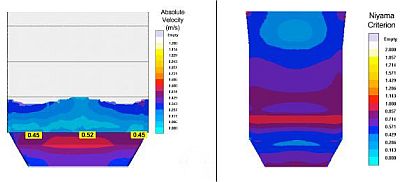
Correlation between Numerical Simulation Results and Empirical Ones in Permanent Mould Gravity Casting of AM60B Magnesium Alloys
Facchinelli N. - University of Padova, DTG Vicenza (Italy)
Bonollo F. - University of Padova, DTG Vicenza (Italy)
Timelli G. - University of Padova, DTG Vicenza (Italy)
Muneratti G. - Foseco Vesuvius (Italy)
Trevisan L. - EnginSoft (Italy)

PRESENTATION
Abstract
The numerical simulation is a powerful tool that allows to properly design the whole casting process and that can provide useful information about the microstructural characteristics and mechanical properties of final castings.
In order to obtain more accurate prediction of the castings' final properties, it is useful to identify semi-empirical relationships occurring between the numerical simulation results and the experimental ones. To do this, it is convenient to set preliminary casting trials and a mould geometry to be used as a reference die, and then compare the results coming from the numerical simulation with those obtained empirically.
The purpose of this work is to investigate these relations to improve the reliability of the numerical simulation as a predictive tool for the final properties of AM60B magnesium alloy castings obtained by gravity casting processes.
This approach has shown the good consistency of the numerical simulation as a predicting tool, for both the mechanical and the microstructural properties, in permanent mould gravity casting process of AM60B magnesium alloys.
